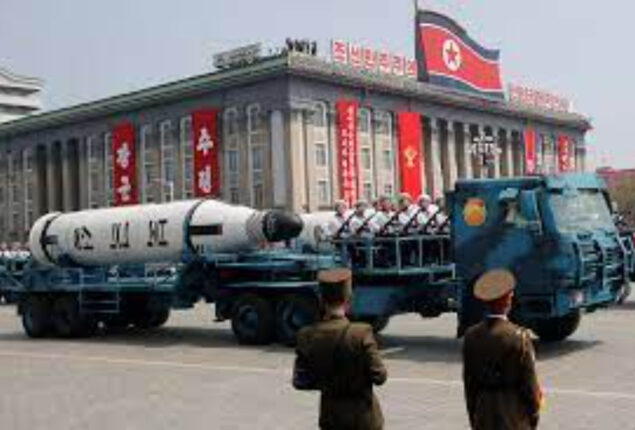Prince William responds to Welsh criticism of England’s support at FIFA
The Herald said the Prince of Wales supported England and Wales in...

According to the defense minister of Japan, North Korea has fired off an intercontinental ballistic missile (ICBM) with enough range to strike the US mainland.
About 210 kilometres (130 miles) west of Hokkaido, the missile made landfall in the ocean.
The launch has been denounced by the US, and South Korea has authorised more aggressive deterrence tactics against the North.
The North Korean FM Choe Son Hui issued a “fiercer” warning on Thursday in response to any escalation of US military posture.
The same day, it also fired off a short-range ballistic missile.
That came after Mr. Yoon, US President Joe Biden, and PM Fumio Kishida of Japan met in Cambodia on Sunday.
Speaking on behalf of the US National Security Council on Friday, Adrienne Watson stated that Mr. Biden had received a briefing and that the US will engage with allies.
Over the last two months, North Korea has launched over 50 missiles, the most of them were short-range. These more uncommon long-range launches directly endanger the US because the missiles can deliver nuclear warheads to any location on the US mainland.
Military leaders in Seoul reported that the most recent suspected ICBM was launched at 10:15 local time (02:15 GMT) from a region close to Pyongyang, the capital of North Korea.
According to South Korea’s military, it travelled 1,000 kilometres (621 miles) at a speed of Mach 22 before reaching an altitude of 6,100 kilometres.
When a missile is shot on a lofted trajectory, it travels a shorter distance while travelling significantly higher into space than it would if it were fired on a regular trajectory.
However, Yasukazu Hamada, Japan’s minister of defence, said that the missile had enough range to reach the US.
“Based on calculations taking the trajectory into account, the ballistic missile this time around could have had a range capability of 15,000 km, depending on the weight of its warhead, and if that’s the case, it means the US mainland was within its range,” he said.
“We have told (Pyongyang) that we absolutely cannot tolerate such actions,” Mr Kishida told reporters in Thailand.
In recent months, North Korea has developed a pattern of firing missiles in retaliation to US military operations near the Korean Peninsula.
It is currently working on the Hwasong-17, a new type of long-range missile that is bigger than the ICBMs it has previously successfully tested.
According to experts, the North has not yet been able to get the Hwasong-17 to fly its whole course after multiple failed efforts to launch it.
The South Korean military claims that the North attempted to fire an ICBM earlier this month, but it failed mid-flight.
The first time in five years, North Korea flew a ballistic missile over Japan in October.
Pyongyang conducted six nuclear tests between 2006 and 2017 and is thought to be contemplating a seventh despite punishing sanctions.
Additionally, Iran has kept improving its military prowess.
Catch all the International News, Breaking News Event and Latest News Updates on The BOL News
Download The BOL News App to get the Daily News Update & Follow us on Google News.